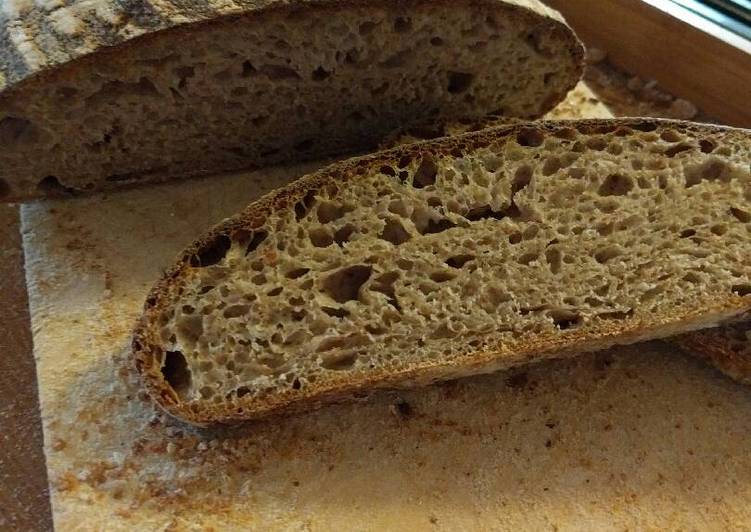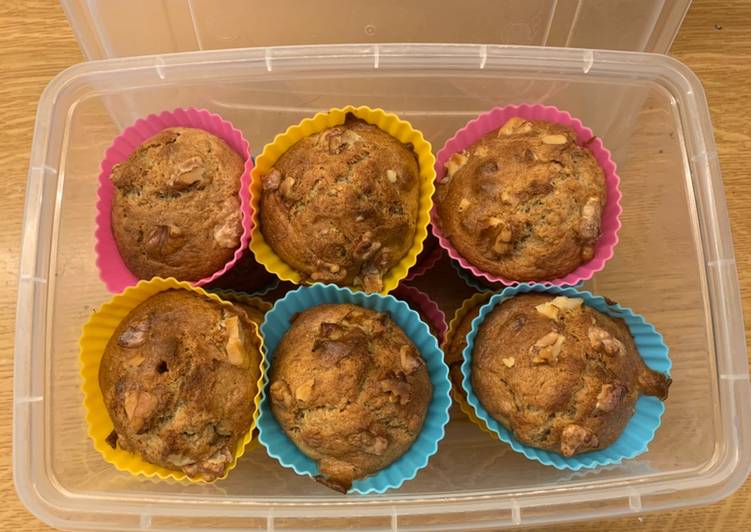
Hello everybody, it’s Jim, welcome to my recipe site. Today, we’re going to prepare a distinctive dish, slow fermented (non retarded) wholemeal sourdough. It is one of my favorites food recipes. For mine, I am going to make it a little bit tasty. This will be really delicious.
And, sourdough bread contains healthy resistant starch and doesn't raise blood glucose levels as much as conventional wheat bread. Making a sourdough starter and then a fermented bread can often seem incredibly. Retarding is a technique that slows the fermentation process of your dough.
Slow fermented (non retarded) wholemeal sourdough is one of the most favored of recent trending meals in the world. It is enjoyed by millions daily. It is simple, it’s quick, it tastes yummy. They’re nice and they look wonderful. Slow fermented (non retarded) wholemeal sourdough is something which I’ve loved my whole life.
To get started with this recipe, we must first prepare a few components. You can have slow fermented (non retarded) wholemeal sourdough using 5 ingredients and 18 steps. Here is how you can achieve it.
The ingredients needed to make Slow fermented (non retarded) wholemeal sourdough:
- Take 150 g sourdough starter
- Prepare 200 g very strong white flour
- Take 385 g strong wholemeal flour
- Make ready 420 ml cold water
- Take 14 g salt
Natural yeasts provide leavening in long-fermented sourdough. You'll spend less time working your dough and more time letting the sourdough do the work for you. Because the fermentation helps break down the bran, it also allows the gluten to develop a better web. This web will then trap the gases produced during the rise time, giving you a.
Steps to make Slow fermented (non retarded) wholemeal sourdough:
- Mix together the starter and the flours, with almost all of the water (hold back a couple of spoonfuls)
- Leave to autolyse for 30 mins.
- Mix the salt with the remaining water.
- Distribute the salty water evenly over the dough
- Using a stand mixer with a dough hook (on a low speed) or by hand - knead very well for 15-20 minutes until dough is very strong and well developed
- Cover the bowl and leave to rise for 24 hours at (cool) room temperature
- Divide dough in two and pre-shape on a lightly floured surface
- I now like to freeze one half - tightly wrapped in clingfilm
- After a 5-10 minute rest, tightly shape the dough and place in a proving basket or tin
- Leave to rise for another 18-24 hours until doubled in size / full of gas
- Preheat oven to 240°C for 30 mins
- Turn out dough onto your baking surface and slash with an oiled razor blade
- Throw a half cup of water into the bottom of the oven
- Add the dough and turn down heat to 210°C
- Bake for 20 mins and reduce heat to 200°C
- Bake for a futher 20 mins.
- If crust still needs to be darker then turn off oven and leave bread inside for 10-15 mins
- Cool, then eat
Many recipes will tell you to retard the dough overnight though that time is subjective based on when you prepared the dough on the first day. Below, she describes her routine, along with suggested amounts for a smaller batch. If you're already a baker, you can pick and choose any particular twists you like; if you're. Sourdough is one of the oldest forms of grain fermentation. Tartine Bakery, San Francisco: Chad Robertson has achieved rock star status for his authentic long-fermented loaves of whole wheat, walnut, sesame, sourdough, and olive.
So that is going to wrap it up for this exceptional food slow fermented (non retarded) wholemeal sourdough recipe. Thanks so much for your time. I am confident that you can make this at home. There is gonna be interesting food in home recipes coming up. Remember to save this page in your browser, and share it to your family, colleague and friends. Thank you for reading. Go on get cooking!


